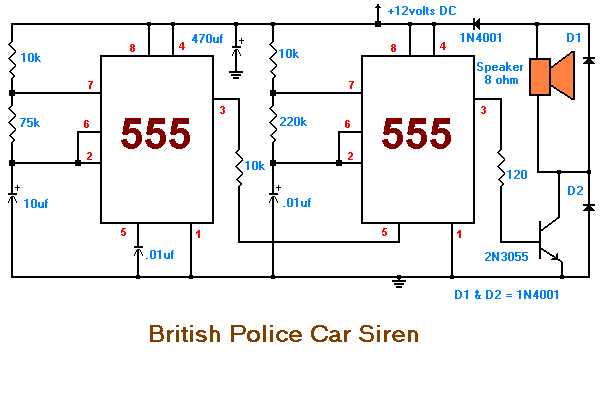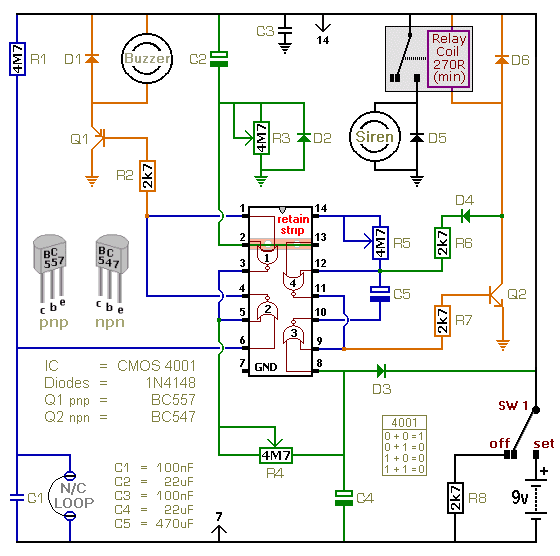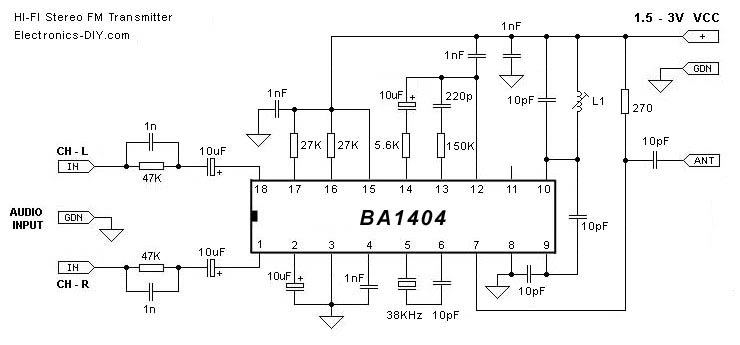
Assortment of Siren Circuits

Assortment of siren circuits. This month, three different types of siren circuits are being created based on the 555 timer. The first circuit simulates the siren of a British police car. It utilizes two 555 timers.
The design of the first siren circuit, which emulates the sound of a British police car, incorporates two 555 timer integrated circuits (ICs) configured in astable mode. The astable configuration allows the circuit to generate a continuous square wave output, which can be adjusted in frequency to create the desired siren effect.
In this circuit, the first 555 timer is responsible for generating a base frequency, while the second 555 timer modulates this frequency to produce a varying pitch characteristic of a police siren. The frequencies can be adjusted by changing the resistor and capacitor values connected to each timer. For instance, using a potentiometer in series with a resistor can provide a variable frequency output, allowing for fine-tuning of the siren sound.
The output from the second 555 timer is typically fed into a small audio amplifier to drive a speaker, ensuring that the siren sound is audible. An additional feature may include a LED indicator that flashes in sync with the siren sound, enhancing the visual effect of the circuit.
Power supply considerations are essential, with a typical configuration using a 9V battery or a regulated power supply to ensure stable operation of the timers. Proper decoupling capacitors should be placed across the power supply pins of the 555 timers to minimize noise and ensure reliable performance.
In summary, the first siren circuit design effectively simulates the sound of a British police car using two 555 timers, with attention to frequency modulation, output amplification, and power supply stability.Assortment of Siren Circuits. This month I am making 3 different types of siren circuits based on the 555 timer. The first circuit simulates the siren of a British police car. It uses two. 🔗 External reference
The design of the first siren circuit, which emulates the sound of a British police car, incorporates two 555 timer integrated circuits (ICs) configured in astable mode. The astable configuration allows the circuit to generate a continuous square wave output, which can be adjusted in frequency to create the desired siren effect.
In this circuit, the first 555 timer is responsible for generating a base frequency, while the second 555 timer modulates this frequency to produce a varying pitch characteristic of a police siren. The frequencies can be adjusted by changing the resistor and capacitor values connected to each timer. For instance, using a potentiometer in series with a resistor can provide a variable frequency output, allowing for fine-tuning of the siren sound.
The output from the second 555 timer is typically fed into a small audio amplifier to drive a speaker, ensuring that the siren sound is audible. An additional feature may include a LED indicator that flashes in sync with the siren sound, enhancing the visual effect of the circuit.
Power supply considerations are essential, with a typical configuration using a 9V battery or a regulated power supply to ensure stable operation of the timers. Proper decoupling capacitors should be placed across the power supply pins of the 555 timers to minimize noise and ensure reliable performance.
In summary, the first siren circuit design effectively simulates the sound of a British police car using two 555 timers, with attention to frequency modulation, output amplification, and power supply stability.Assortment of Siren Circuits. This month I am making 3 different types of siren circuits based on the 555 timer. The first circuit simulates the siren of a British police car. It uses two. 🔗 External reference





